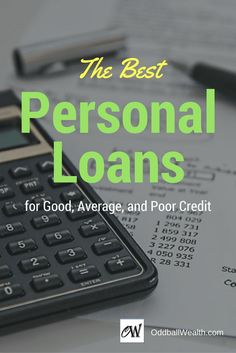Personal loans can be a valuable financial tool for individuals looking to cover unexpected expenses, consolidate debt, or finance significant life events. Before taking out a personal loan, it’s essential to understand how they work, their benefits and drawbacks, and the factors to consider when applying. Here’s a comprehensive guide on personal loans.
What is a Personal Loan?
A personal loan is a type of installment loan that allows borrowers to receive a lump sum of money from a lender, which they agree to repay over a set period through fixed monthly payments, typically with interest. Unlike auto loans or mortgages, personal loans are often unsecured, meaning they do not require collateral like a house or car.
Types of Personal Loans
Unsecured Personal Loans: The most common type, unsecured loans do not require any collateral. Approval is based on the borrower’s creditworthiness, income, and ability to repay.
Secured Personal Loans: Secured loans require collateral, such as savings accounts, certificates of deposit (CDs), or other assets. Because the lender has collateral, these loans typically have lower interest rates.
Fixed-Rate Personal Loans: These loans have a fixed interest rate, meaning your monthly payments will remain consistent throughout the loan term.
Variable-Rate Personal Loans: With these loans, the interest rate can fluctuate based on market conditions, meaning your monthly payments can change over time.
Common Uses of Personal Loans
Debt Consolidation: Personal loans can be used to pay off high-interest debt, such as credit cards, by consolidating multiple debts into one loan with a potentially lower interest rate.
Home Improvement: Personal loans can finance home renovation projects, making them a flexible alternative to home equity loans.
Medical Expenses: They can cover medical bills or procedures that are not fully covered by insurance.
Major Purchases: From buying appliances to covering wedding costs or travel expenses, personal loans offer the flexibility to finance significant purchases.
Emergency Expenses: Personal loans can provide a quick solution for unexpected expenses, such as car repairs or emergency home repairs.
How to Qualify for a Personal Loan
Credit Score: Lenders typically look for a good credit score (usually 670 or higher) when approving unsecured loans. A higher credit score can also help secure a lower interest rate.
Income: Lenders want to ensure you have a steady income to repay the loan. This may involve verifying your employment status and asking for proof of income.
Debt-to-Income Ratio (DTI): Your DTI ratio compares your monthly debt payments to your gross monthly income. A lower DTI ratio increases your chances of loan approval.
Loan Amount: The amount you want to borrow may affect your approval chances. Asking for more than you can reasonably repay based on your income and credit may result in denial.
Benefits of Personal Loans
Fixed Monthly Payments: Fixed-rate personal loans provide predictability in budgeting, as you know exactly how much you’ll pay each month.
Flexible Use: Personal loans can be used for various purposes, unlike some loans that are restricted to specific purchases (e.g., auto loans or mortgages).
Potential to Lower Interest Rates: For borrowers with high-interest debt, a personal loan could offer a lower interest rate, reducing the overall cost of borrowing.
No Collateral Needed: Most personal loans are unsecured, meaning you don’t risk losing your assets if you can’t repay the loan.
Drawbacks of Personal Loans
Interest Rates: While personal loans can offer lower rates than credit cards, they often have higher rates than secured loans such as home equity loans, especially for borrowers with lower credit scores.
Fees: Personal loans may come with fees, such as origination fees, late payment fees, or prepayment penalties, which can increase the cost of the loan.
Impact on Credit: Missing payments or defaulting on a personal loan can hurt your credit score and financial standing.
Fixed Repayment Term: Once you agree to a personal loan, you must adhere to the fixed repayment schedule, which may not offer as much flexibility as a credit card or line of credit.
Factors to Consider Before Applying
Interest Rates: Compare offers from multiple lenders to secure the best interest rate, keeping in mind that your credit score and financial situation will influence your rate.
Loan Terms: Personal loans typically have repayment terms ranging from 1 to 7 years. Consider how the term affects your monthly payments and total interest costs.
Fees: Read the loan agreement carefully to understand any fees associated with the loan, such as origination fees, late fees, or early repayment penalties.
Loan Amount: Only borrow what you need to avoid paying unnecessary interest on a larger loan than necessary.
Lender Reputation: Choose a reputable lender with positive reviews and clear, transparent lending practices












